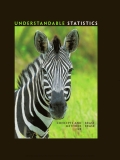
Concept explainers
Please provide the following information for Problems 15–26 and 29–35.
- (a) What is the level of significance? State the null and alternate hypotheses.
- (b) Check Requirements What sampling distribution will you use? What assumptions are you making? Compute the sample test statistic and corresponding z or t value as appropriate.
- (c) Find (or estimate) the P-value. Sketch the sampling distribution and show the area corresponding to the P-value.
- (d) Based on your answers in parts (a) to (c), will you reject or fail to reject the null hypothesis? Are the data statistically significant at level α?
- (e) Interpret your conclusion in the context of the application.
Note: For degrees of freedom d.f. not in the Student’s t table, use the closest d.f. that is smaller. In some situations, this choice of d.f. may increase the P-value a small amount and therefore produce a slightly more “conservative” answer.
Answers may vary due to rounding.
22. Education: Tutoring In the article cited in Problem 21, the results of the following experiment were reported. Form 2 of the Gates–MacGintie Reading Test was administered to both an experimental group and a control group after 6 weeks of instruction, during which the experimental group received peer tutoring and the control group did not. For the experimental group n1 = 30 children, the mean score on the vocabulary portion of the test was
21. Education: Tutoring In the journal Mental Retardation, an article reported the results of a peer tutoring program to help mildly mentally retarded children learn to read. In the experiment, the mildly retarded children were randomly divided into two groups: the experimental group received peer tutoring along with regular instruction, and the control group received regular instruction with no peer tutoring. There were n1 = n2 = 30 children in each group. The Gates–MacGintie Reading Test was given to both groups before instruction began. For the experimental group, the mean score on the vocabulary portion of the test was
Trending nowThis is a popular solution!

Chapter 8 Solutions
Understandable Statistics: Concepts And Methods
 Glencoe Algebra 1, Student Edition, 9780079039897...AlgebraISBN:9780079039897Author:CarterPublisher:McGraw Hill
Glencoe Algebra 1, Student Edition, 9780079039897...AlgebraISBN:9780079039897Author:CarterPublisher:McGraw Hill College Algebra (MindTap Course List)AlgebraISBN:9781305652231Author:R. David Gustafson, Jeff HughesPublisher:Cengage Learning
College Algebra (MindTap Course List)AlgebraISBN:9781305652231Author:R. David Gustafson, Jeff HughesPublisher:Cengage Learning

